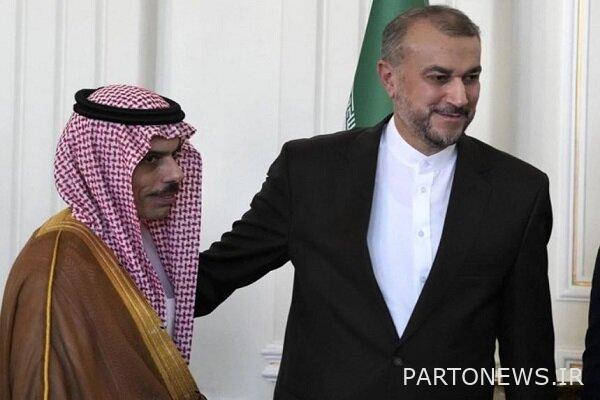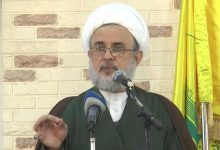Foreign Policy: The countries of the Middle East replaced America with Iran – Mehr news agency Iran and world’s news

According to Mehr News Agency, an American publication Farren policy In an article dealing with the resumption of relations between Tehran and Riyadh, he considers it a sign of changing regional conditions in favor of Iran and to the detriment of America.
farn policy He started his article with the visit of Chinese President Xi Jinping to Riyadh in early December and his attendance at the meeting of the leaders of the Arab countries bordering the Persian Gulf. A trip in which the Chinese president, in addition to meeting and talking with the senior officials of Riyadh, also consulted with the heads of Arab countries. A trip that, of course, in Thehttps://instagram.com/mehr_agency It was a critical moment, when issues such as energy security, regional security and human rights had strained the relationship between the two old allies, Riyadh and Washington.
story farn policy From this event, the foreign ministers of several Asian countries gathered to discuss the end of regional turmoil. One of the present countries (China) acts as a mediator Gr It appears to end the hostility of two other countries (Iran and Saudi Arabia) and the Beijing 2023 agreement was formed to normalize relations between Iran and Saudi Arabia. An agreement reminiscent of Bangkok’s mediation in 1967 to end hostilities between Indonesia and Malaysia. It was at that point that the concept of one of the world’s most successful regional organizations was born: the Association of Southeast Asian Nations (ASEAN).
This American publication continues to discuss the reasons for the formation of ASEAN, where in the late 60s, the countries of Southeast Asia came to the conclusion that without cooperation, they would neither experience economic growth nor be able to secure themselves, especially with Considering the emergence of China as a new power. The intensification of the war in Vietnam and the fear of the spread of communism from the movements supported by China, became the reason for ASEAN to be formed and gradually bring more countries under its umbrella.
The Middle East on the way to Southeast Asia
farn Referring to this history, Policy writes that the recent de-escalation in West Asia proves that the regional consciousness that Southeast Asia reached in the 1960s is now being formed in the Middle East. Talks between Iran and Saudi Arabia started in Baghdad in April 2021, went to Muscat, Oman, and finally reached Beijing, where they reached an agreement that is expected to continue.
farn Policy believes that there is still uncertainty about the prospect of diplomacy in the Middle East. This applies especially to the normalization of relations between Iran and Saudi Arabia, where some differences between Riyadh and Tehran cause concerns about the durability of the resumption of relations between the two sides. But as in Southeast Asia in the 1960s, there are forces at work in the Middle East and the world today that can reduce these doubts.
This American publication concludes from the recent developments in the Middle East that instead of dancing to the tune of foreigners, the countries of the Middle East have placed their national interests as the basis of agreements. As competition between great powers intensifies, regional powers have more options and prefer to act freely rather than be committed allies of global powers.
America is an unreliable ally
While America has no intention of leaving the Middle East, its Arab allies in the Persian Gulf have questioned its credibility as a guarantor and security partner. This is what makes them move closer to Iran instead of moving away from it.
farn The policy to turn Saudi Arabia away from America refers to the drone attacks in 2019 on two Aramco oil company refineries and writes that at that time it was thought that these attacks were the work of Tehran, but the administration of Donald Trump, despite the many strong positions against Tehran, did not react to This incident did not show.
After that, the Carter Doctrine lost its color for the Saudis, a doctrine that was formulated in 1980 under the title of the US commitment to use force to defend its national interests in the Persian Gulf. Undoubtedly, this development made the Saudis ready to negotiate with Iran. And after the Saudis, now the United Arab Emirates and Oman are also trying to expand their dialogues with Iran.
farn Policy writes that despite the belief in Washington that the Middle East cannot achieve stability without American intervention, in the current situation, the obvious issue is that the primary motivation for stability should be formed by the regional powers. As these recent developments and the move towards negotiations with Iran have proven, there is a view in the region that stability and de-escalation – from the civil wars in Yemen and Syria to the problems in Lebanon and Iraq – require cooperation between regional actors, with or without the US. Is.
China favors regional security
This American publication notes that now that China has assumed a new diplomatic role in the Middle East, this issue can help maintain the process of reducing tension in the region. Beijing does not follow Washington’s approach to create an offshore balance against Iran through Saudi Arabia and the Zionist regime. Rather, it has adopted a more neutral approach to regional conflicts, in such a way that instead of fueling tensions, it seeks peace in the region.
farn The policy on the importance of stability in the Middle East for China writes that Beijing is the largest trading partner of Iran and Saudi Arabia, although the amount of trade between China and Saudi Arabia is about six times greater than between China and Iran. Since China receives half of its oil from the Persian Gulf, its energy security requires that it adopt policies that reduce the possibility of conflict between Tehran and Riyadh.
This American publication believes that China’s diplomatic approach in the Middle East may lead America to engage in diplomacy. Because now that China has brought Iran and Saudi Arabia together again through mediation, the White House must now try to restore its image, because China has adopted a peaceful image and America is known as a warmonger in the world, which is only He wants to sell weapons to the Middle East.
farn Tehran’s short-term winning policy in the recent agreement with the Saudis considers that the agreement with Riyadh may distance Saudi Arabia from the Zionist regime, at least for the time being. More importantly, at least this agreement can be the beginning of a new era of “cold peace” between Tehran and Riyadh, an era in which both sides stop interfering in each other’s internal affairs. The issue that Tehran and Riyadh call the center.
In the end, this American publication notes that the changing calculations in the Middle East indicate the changing realities at the regional and global level.
Follow Mehr News Agency on social networks

